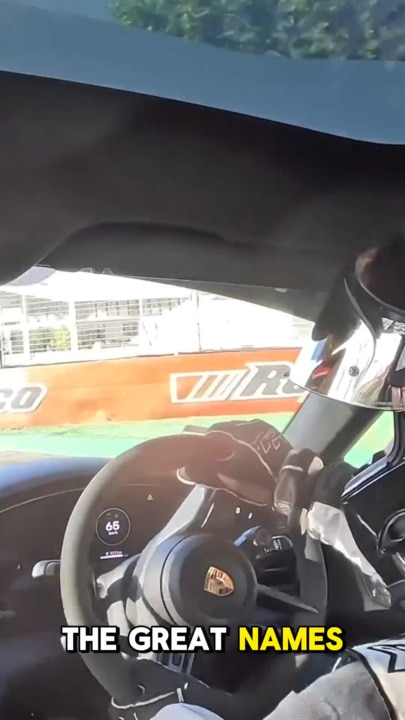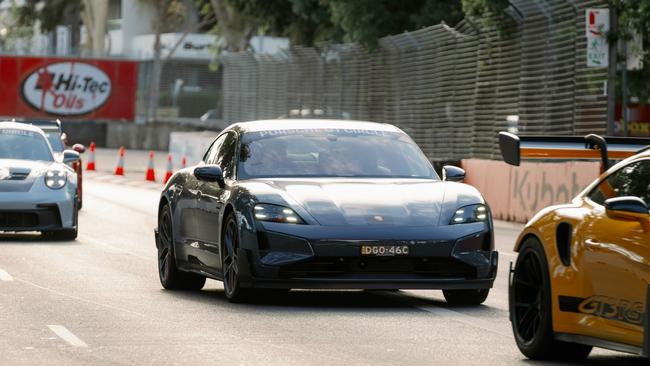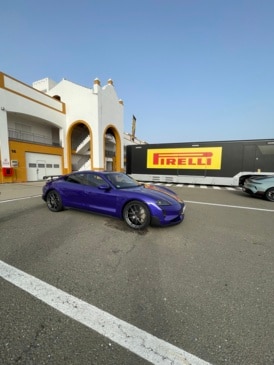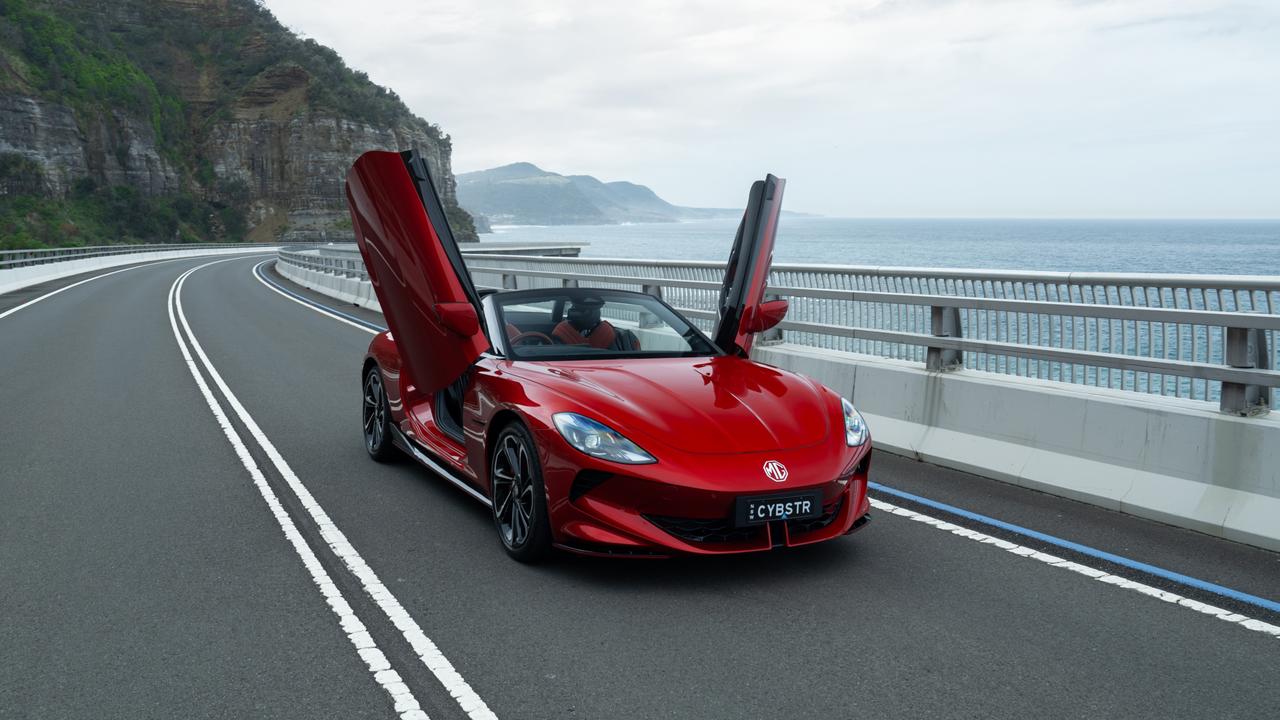Driving the Porsche Taycan Turbo GT at the Adelaide 500
This electric weapon has almost twice the power of a Supercar. Can it handle the Adelaide 500 circuit?

New Cars
Don't miss out on the headlines from New Cars. Followed categories will be added to My News.
Attacking the Adelaide 500 circuit in Australia’s quickest car is an assault on the senses.
Firing out of pit lane at maximum attack is a genuinely unpleasant experience.
The G forces feel like a kick to the chest while your stomach drops instantly, as though you’ve jolted awake from a nightmarish fall from a building.

MORE: Driving Porsche’s Taycan Turbo GT
Porsche’s Taycan Turbo GT makes a staggering 815kW of power when pushed – roughly 1100 horsepower, or damn near double the grunt Supercars pilots can exploit.
It’s enough to hit 100km/h in just 2.3 seconds.
That makes it the quickest car ever offered to the Australian public.
Forget about the screaming revs and crackling exhaust of a race car – this beast is electric.
Eerily silent as it streaks down the track at more than 200km/h, the battery-powered weapon is accompanied by wind roar and road noise as it hurtles past the pits.
And a voice inside your head screaming to brake. Now.

MORE: Motorsport’s electric future
Carrying momentum through the Senna Chicane at turn one isn’t easy.
Straight-lining the technical complex is a delicate balance between bravery and control.
Like a rugby player trying to break through an opposing line, you’re shoulder-barged with forces from the left and right as the car slams over bumps, then aim for a concrete wall on corner exit.
The racing line at Adelaide requires drivers to run right out to the walls, almost skimming their mirrors against unforgiving concrete barriers lining Wakefield Road.

MORE:On track with Porsche’s 911 GT3 RS
Nothing about this feels natural. The complex from turns four to seven is a concrete maze that feels inescapable – you trust your wits, lean on the car and juggle the need for speed while leaving a small margin for safety.
You get a chance to breathe coming out of turn seven, where the circuit unfurls in front of you.
Pressing the boost button on the steering wheel unleashes an extra 120kW of power in “attack mode”, sending the $450,000 beast scrambling for traction as it fires down Bartels Road.
It’s like watching an action movie on mute. In fast-forward.

Concrete barriers painted in sponsor colours melt into a rainbow stream in your periphery, fringed by a stream of metal catch fence overhead.
You get a moment to catch your breath before Australia’s most dangerous bend snatches it away.
I was trackside in 2008 when Ashley Cooper was killed at turn eight, a brutally unforgiving bend that requires bravery and precision in equal portion.
A cautious driver might shift down a gear or two for the blind bend, but there’s no gear stick in the electric Porsche.
You simply brush the left pedal, reapply a little throttle, turn in, and hang on.


Then rip past 200km/h for the third time in a lap on Brabham Straight and push the brake pedal so hard it might snap into the turn nine hairpin.
Sweeping bends in the final sector are faster, but ultimately less taxing than the slower 90-degree junctions earlier on, as the concrete walls are much further away from the road surface.
Tipping into the final right-hander, the electric Porsche has no problem blasting away from conventionally powered sports cars on pit straights, but you need to be careful when stopping as it weighs as much as a Toyota Prado.
And you need to keep an eye on the battery charge, as 550 kilometres of real-world driving range translates to about 45 minutes of track time.
It will be a long time before battery-powered cars contest the Adelaide 500.
But it might happen. And though the race would be quieter, there’s no doubt electric supercars would be much faster than the V8-powered classics.
Originally published as Driving the Porsche Taycan Turbo GT at the Adelaide 500





